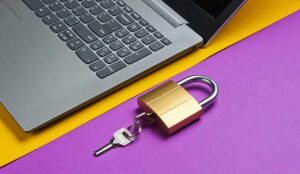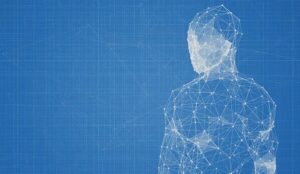Data has always been central to the learning experience, whether as report cards, standardized test results, or textbook exercises. But as the implementation of digital learning tools becomes more and more ubiquitous in the classroom, ensuring the privacy and security of student data will be one of the most important challenges for schools.
Data Will Be Central to the Classroom of the Future
Data collection and analytics open up new possibilities for teachers to personalize teaching and track student development along various metrics. Microsoft Teams, for example, has developed the Reading Progress program, which analyzes audio and video recordings of students reading passages selected by the teacher using AI algorithms.
The data generated by the programs like this allow teachers to better understand the challenges at both an individual student and class-wide level by tracking accuracy rate, correct words per minute, mispronunciations, omissions, and many more.
Data-driven programs such as this will revolutionize the way students interact with learning materials and make progress in their educational journey. However, collecting data at scale also opens up new vulnerabilities for students, teachers, and schools.
The Growing Risks of Data Breach
Cyberattacks and ransomware continue to pose a growing threat to organizations around the world and unfortunately educational institutions are no exception.
According to a report from cybersecurity leader Sophos entitled The State of Ransomware in Education 2021, 44% of organizations in the education sector globally were hit by some form of ransomware in 2020, 58% of which said that the cybercriminals succeeded in encrypting their data in the most significant attack.
And those organizations which paid the ransom only got back on average 68% of their data. This still leaves a large amount of data vulnerable to future exploitation.
Keeping Student Data Anonymous
Whether based in legislation or the technology itself, there are many avenues to ensure that students’ data and privacy is protected. One of the most basic and effective ways to protect students from malicious data breaches is through data anonymization practices.
This is essentially done by removing personally identifiable information from the actual data itself. For example, the EU’s General Data Protection Regulation requires that data stored on people within the EU be anonymized. This legislative angle is an important part of the equation.
However, it is also crucial that the tools we use to collect information anonymize the data they produce. For example, alongside the meteoric rise of unified communications (UC) platforms like Teams, Zoom, and Google Meet in the classroom, there has been an increase in the use of intelligent video devices.
These technologies have functions such as People Count and Intelligent Zoom, which identify individuals and physical cues within the room to create a more humanized and lifelike experience. But because they are able identify people, ensuring that the devices you’re using have anonymization capabilities is essential.
Making Sure Data Is Never Vulnerable in the First Place
Similar to data anonymization is data minimization, or the practice of collecting, transferring, and storing only that data which is necessary for a specific purpose.
If an intelligent video technology needs to count people in a room to make immediate, real-time decisions about room capacity or whom to zoom in on, there is no need to send that data to the cloud for processing.
With edge AI-enabled devices, data processing can take place on the device itself, not only allowing for more rapid computing but also facilitating more secure data handling practices. Using peripherals with security measures to anonymize data at the source of capture removes the ability for it to be breached: if that data doesn’t even get to the cloud, it can’t be leaked from the cloud.
This is especially important when considering the sensitivity around data of minors and ensuring that we provide safe learning environments for young people. Schools should be a safe haven for children, and thus we have a responsibility to transfer this safety to digital environments.
With both the virtual and physical classroom playing an important role in the education models of the future, it is essential to make sure that data from the classroom stays in the classroom.
In choosing a technology ecosystem and implementing further digital learning, school IT teams and administrators need to make sure they are accounting for end-to-end security for students.
Author: Guest Author
Published On: 21st Sep 2021
Read more about - Guest Blogs, Jabra




































